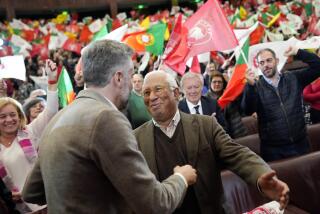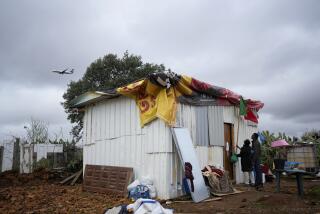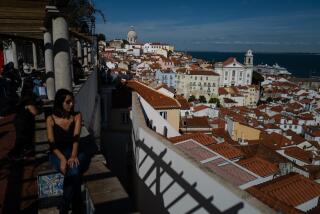Cape Verde Atlantic Archipelago Steers Off Socialist Road Onto Free-Market Path
- Share via
TARRAFAL, Cape Verde — Outside this drowsy town, a hodgepodge of huts, overgrown with rambling purple creepers, is all that’s left of “the camp of slow death”--once the most feared prison of Portugal’s African empire.
In those days, it housed hundreds of Portuguese and African dissidents in myriad cramped cells.
But today’s independent government would like to turn it into a museum with beachside bungalows nearby to attract tourists and their money to this barren, 10-island archipelago in the Atlantic off northwest Africa.
It is part of Cape Verde’s turn off the Marxist-socialist road taken after independence in 1975 into free-market square.
Cape Verde’s leaders have introduced sweeping economic reforms and are even debating scrapping their guaranteed monopoly on power.
“We have no abstract model, no preconceived ideas,” Prime Minister Pedro Pires said, sitting in his modest office in Cidade da Praia, the capital. “We’re trying a pragmatic and gradual search for a better life.”
The search includes tourism, fishing and light manufacturing--and perhaps investment from Cape Verdeans who emigrated over the years and now live in affluence in such places as the U.S. East Coast.
The governing African Party for Cape Verdean Independence decided just over a year ago to remove state controls from all sectors save the central bank and offer tax breaks to attract foreign capital.
“The economy has been prudently managed, but the only avenue out of chronic dependency is to become a sort of Singapore or Mauritius,” said Tom Luche, director of U.S. Agency for International Development in Cidade da Praia. (Singapore and Mauritius are duty-free zones.)
“This place is small and there’s a considerable amount of private cash here. . . . It only needs a couple of sectors to work well.”
Luche estimates that Cape Verde’s fishermen could triple their current 10,000-ton annual catch and improve canning and freezing installations for tuna and other fish, which already account for about 70% of exports.
In addition to Tarrafal, another tourist prospect is Sal Island, 120 miles to the north, where steady winds, potent rum and cheap lobster already attract the ritzy European windsurfing set.
The government plans 10 new luxury hotels in the islands over the next 10 years, boosting capacity by 2,500 rooms.
But island life remains tough for most of the 360,000 Cape Verdeans who still live here, 385 miles off Senegal in Africa’s Sahel region.
With few natural resources other than rich fishing waters, the archipelago relies on foreign aid for 90% of its food requirements.
Famine killed an estimated 250,000 islanders from 1747 to 1960, and violent storms that ended a 16-year dry period in 1984 washed out corn and wheat crops.
Last year, when rain fell for only minutes, vegetables were so scarce that onions were sold by the slice and fetched twice the price of lobster.
Most rural housewives have to walk miles for water. Their neat, pastel-painted houses have no electricity.
Still, Cape Verde’s per capita gross national product of $530 lands it in the World Bank’s middle-income class, comparable to Senegal, and one rung up the development ladder from countries such as Kenya and Indonesia.
But the gross national product is propped up some 30% by foreign aid and remittances from an estimated 700,000 Cape Verdeans living and working abroad, mainly on the U.S. East Coast, Portugal, France, the Netherlands and several African countries.
In the 1800s, many Cape Verde whalers settled in Massachusetts and Rhode Island, where today they number more than 350,000.
They read their own newspaper--The Cape Verdean--and send money and goods regularly to families and friends back home.
“We’re still not in condition to stop emigration, but more and more emigrants are investing here following the new regulations,” said President Aristides Pereira.
More to Read
Sign up for Essential California
The most important California stories and recommendations in your inbox every morning.
You may occasionally receive promotional content from the Los Angeles Times.













